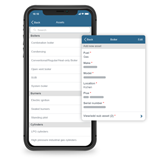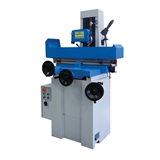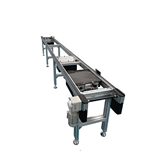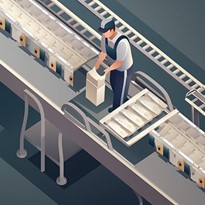Key Takeaways
- Investment focus: A conveyor system isn't an expense; it's a strategic investment in productivity and safety. A well-chosen system can deliver a full return on investment in 1-3 years through reduced labour costs and increased throughput.
- Total Cost of Ownership (TCO) over purchase price: The true cost of a conveyor includes installation (10-20% of purchase price), energy, maintenance, and spare parts. Always calculate the TCO over a 10-year lifespan to make an accurate financial decision.
- Compliance is non-negotiable: In Australia, conveyor systems must comply with the AS/NZS 4024 safety of machinery standards. This dictates mandatory requirements for guarding, emergency stops, and risk assessments to meet your legal WHS obligations.
- Match the type to the task: Belt conveyors are versatile all-rounders; roller conveyors are ideal for flat-bottomed goods in logistics; and heavy-duty chain conveyors are essential for industries like automotive and mining.
- Plan the installation meticulously: A poorly planned installation is a primary cause of budget overruns and extended downtime. A detailed installation plan, agreed upon with your supplier before purchase, is critical for a smooth rollout.
- Prioritise local support: The availability of Australian-based technicians and spare parts for your chosen brand is crucial. Waiting weeks for a part from overseas can cost you far more in lost production than any initial saving on the purchase price.
Introduction: The engine of Australian industrial efficiency
In the relentless push for efficiency, Australian industrial businesses, from manufacturing and logistics to mining and food processing, rely on one piece of equipment more than any other to keep operations moving: the conveyor system. In the competitive landscape of 2025, faced with high labour costs and the constant need for higher throughput, a conveyor is no longer just a way to move products; it's the central artery of your operation.
Investing in a new or upgraded conveyor system is a major capital decision. The right system can unlock significant productivity gains, improve worker safety, and provide a rapid return on investment. The wrong choice, however, can lead to operational bottlenecks, ongoing maintenance issues, and a failure to meet Australia’s stringent safety standards. This guide provides a comprehensive framework for industrial decision-makers to navigate the purchasing process, ensuring your investment is strategic, compliant, and profitable for years to come.
The strategic decision: Justifying your investment
Before looking at hardware, the first step is to build a clear business case. A conveyor system should be a solution to a specific problem.
- Return on Investment (ROI): The primary justification is financial. A conveyor system reduces the need for manual handling, freeing up staff for higher-value tasks. Calculate your potential ROI by estimating labour savings, increased production output, and reduced product damage. A payback period of 1-3 years is a common and achievable target for many systems.
- Workplace Health and Safety (WHS): Manual handling injuries are a leading cause of workers' compensation claims in Australia. According to Safe Work Australia, these injuries represent a significant cost to businesses. By automating the movement of goods, a conveyor system designs out manual handling risks, directly improving safety and reducing potential liability.
- Throughput and Scalability: A conveyor provides a consistent, predictable flow of materials, eliminating the variability of manual processes. This increases your facility's overall throughput and makes it easier to scale your operations up or down to meet demand.
Choosing the right tool for the job: Key conveyor types
The term "conveyor" covers a vast range of equipment. Choosing the right type is critical.
- Belt conveyors: The most common type, using a continuous belt over a series of rollers or a solid slide bed. They are exceptionally versatile and can handle everything from small boxes in a warehouse to bulk materials like grain or ore in heavy industry.
- Roller conveyors: Use a series of rollers to move products. They are ideal for items with flat, rigid bottoms like cartons, totes, and pallets. Gravity rollers use a slight decline to move goods without power, while powered rollers (or "lineshaft" conveyors) use a motor for controlled movement.
- Chain conveyors: Use single or multiple strands of heavy-duty chain to transport heavy, bulky items. They are extremely durable and common in industries like automotive manufacturing (for vehicle chassis), pallet handling, and heavy industry.
- Spiral conveyors: The definitive solution for moving goods vertically while saving space. They transport items in a continuous flow up or down a spiral track, occupying a much smaller footprint than a long, inclined belt conveyor.
- Overhead conveyors: These systems transport items along a track suspended from the ceiling, freeing up valuable floor space for other operations. They are common in paint lines, parts handling, and garment processing.
Budgeting and finance: Understanding the true cost
A smart investment requires a full understanding of all associated costs, both upfront and ongoing.
Price ranges in Australia (indicative)
- Basic Belt/Roller Conveyors: $7,500 – $25,000 for simple, pre-engineered systems.
- Spiral Conveyors: $15,000 – $70,000+, depending on height and capacity.
- Custom Integrated Systems: $100,000 to several million dollars for complex, automated systems in large-scale facilities.
Total Cost of Ownership (TCO)
The purchase price is just the beginning. A true budget must include the TCO:
- Purchase Price: The initial capital outlay.
- Installation: This can add 10-20% to the cost and includes site prep, mechanical and electrical work, and integration.
- Energy Consumption: Modern, high-efficiency motors and variable speed drives (VSDs) can significantly reduce long-term running costs.
- Maintenance and Spares: Budget 3-5% of the purchase price annually for scheduled maintenance and replacement of wear parts (belts, rollers, bearings).
- Downtime: The potential cost of lost production if the conveyor fails.
Financing your purchase
Financing is a smart way to preserve working capital. The most common option for Australian businesses is a chattel mortgage, where you own the asset from day one and can claim the full GST on the purchase price in your next BAS, providing a significant cash flow benefit.
Technical specifications: What to look for
When comparing quotes, dig into the technical details to assess the quality and suitability of the equipment.
- Frame Construction: Is it made from mild steel (for general use) or stainless steel (essential for food, beverage, and pharmaceutical applications due to hygiene requirements)? Stainless steel can add 20-30% to the cost but is non-negotiable for certain industries.
- Drive System: The motor and gearbox are the heart of your conveyor. Look for high-quality, energy-efficient motors from reputable brands with local Australian support (e.g., SEW-Eurodrive, NORD). A Variable Speed Drive (VSD) provides greater control over your process flow.
- Belt or Roller Type: The carrying surface must match your product. Options range from standard PVC belts to heavy-duty, abrasion-resistant rubber for mining, or modular plastic belts for food applications that require regular washdowns.
Australian compliance and safety: Your non-negotiable obligations
Ensuring your conveyor system is safe and compliant is not optional; it is a legal requirement under Australian WHS law.
Key Australian Standards
Your system must be designed, installed, and maintained in accordance with the AS/NZS 4024 Safety of machinery series of standards. The key parts for conveyors include:
- AS/NZS 4024.3610 (General requirements)
- AS/NZS 4024.3611 (Belt conveyors for bulk handling)
- AS/NZS 4024.3612 (Chain conveyors)
Essential safety features
Your risk assessment must ensure these features are in place and functional:
- Guarding: All pinch points, nip points, chains, sprockets, and moving parts must be physically guarded to prevent accidental contact.
- Emergency Stops (E-stops): Must be clearly marked and accessible at the operator station and at regular intervals along the conveyor.
- Pull Cords: For long belt conveyors, a pull cord or wire running the full length of the system is mandatory to allow anyone to stop it from any position.
- Lock-Out/Tag-Out (LOTO) Provisions: The main power isolator must have a physical lock-out provision to ensure the system cannot be accidentally started during maintenance.
Installation and integration: Planning for a smooth rollout
The installation phase is where many projects run into delays and cost overruns. Meticulous planning is key.
- Site Preparation: Ensure your floor is level and can handle the load. Check for adequate clearance around and above the conveyor for safe access and maintenance.
- Integration: Plan how the conveyor will connect with your existing machinery and software. If it needs to communicate with a Warehouse Management System (WMS) or robotic cell, this requires specialised programming and sensors.
- Commissioning: Once installed, the supplier must conduct a formal commissioning process. This involves testing the system under full load to verify its performance and safety features before the final handover.
Actionable Tip: Before purchasing, insist on a detailed installation plan and timeline from your supplier. This should clearly define responsibilities, costs, and expected downtime to prevent surprises.
Conclusion
A conveyor system is a foundational investment that can define the efficiency and safety of your entire operation for years to come. By moving beyond a simple focus on purchase price to a holistic assessment of your operational needs, Total Cost of Ownership, and strict Australian compliance requirements, you can make a strategic decision. A well-planned and properly integrated conveyor system will deliver a rapid return on investment and provide a reliable, long-lasting backbone for your business's growth.



















